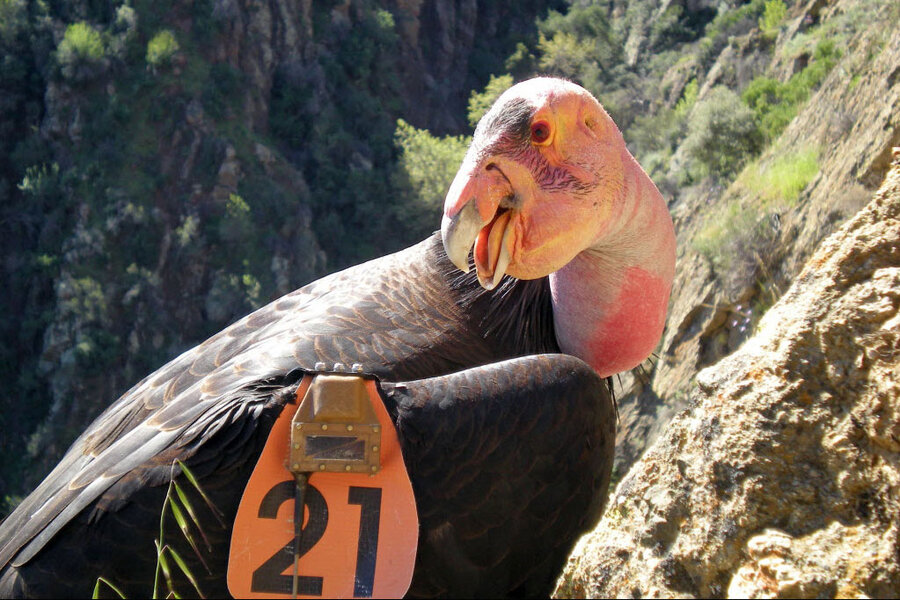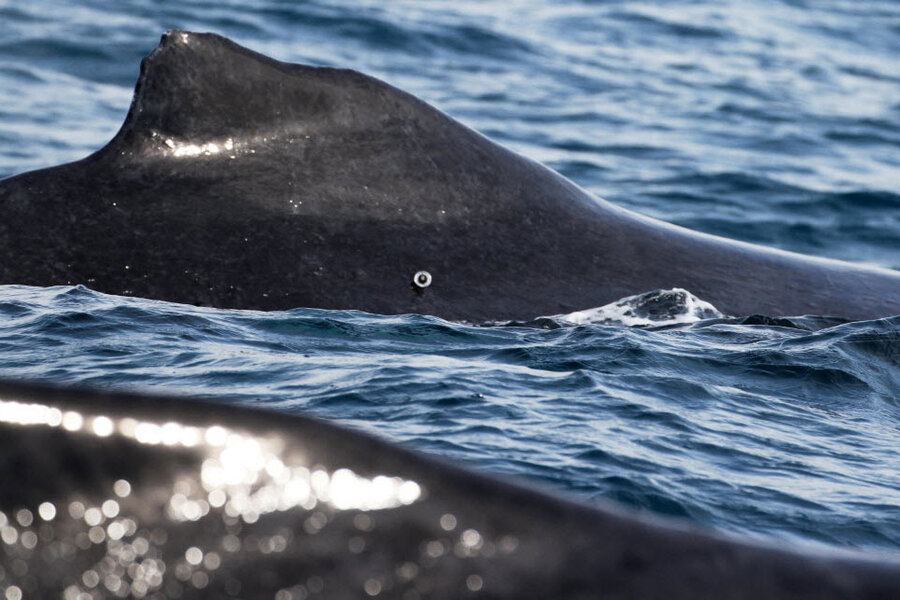From grizzlies to condors: Tiny tech revolutionizes how to study wildlife
Loading...
Increasingly sophisticated technologies have opened a window into the mysterious world of wild animals, allowing humans to reach into the depths of the ocean, and to the heights of the tallest mountains to follow animals as they feed, socialize, or migrate.
Solar-powered trackers attached to the wings of California condors have allowed scientists to follow their soaring flights to 15,000 feet, while tags attached to humpback whales have revealed the mammals’ 1,000-foot dives to underwater mountains. And the GPS collars on Yellowstone grizzly bears are delivering new insights about their feeding habits and wellbeing.
The wealth of data scientists can collect from smaller, more durable, and smarter tracking devices is helping them determine how to protect wild animals and their habitats by revealing new information about previously hard-to-study animals.
“We need to know what animals do and where they do it to understand how the diverse elements of ecosystems interact to make the system work,” wrote Rory Wilson, head of the Department of Biosciences at Swansea University’s College of Science in Wales, in a column in The Guardian last year.
Sophisticated devices tracking grizzly bears in Yellowstone National Park, for instance, are helping scientists determine whether the bears can find food, an important piece of information in deciding whether the Endangered Species Act protections of the bears – which are currently designated as “threatened” – can be lifted.
The grizzly’s food source, whitebark pine, has been declining because of an insect infestation, so advanced GPS collars – used to track the activity of the bears – help conservationists determine if they are finding alternative sources of food during fall, a time when they are trying to pack on weight before winter hibernation.
Because the collars can tell whether the bear is spending a long time in a specific location to guard a dead carcass or to nap, scientists think that they are relying on carcasses as a replacement to the whitebark pine.
"We were actually able to determine differences in the patterns between those types of activities," said Frank van Manen, a wildlife biologist at the Northern Rocky Mountain Science Center.
Scientists are also relying on new tracking findings, along with meteorological data, to create maps of areas with weather conditions suitable for condors, a federally protected bird that for the first time in 25 years is on the rebound in California thanks to conservation efforts.
Tracking data are helping scientists understand why California condors soar so high – up to 3 miles above Earth – before landing to feed on dead animals. Data show that condors gain a high altitude, then take a long downhill glide, and slope in the direction of a dead animal or to an area where they had previously found dead animals.
One condor took a 70-mile flight, traveling 210 miles in a single day, says Joseph Brandt, a wildlife biologist with the US Fish and Wildlife Service at the Hopper Mountain National Wildlife Refuge in California. Since wing flapping is inefficient for the large birds with wingspans of 10 feet, they ride currents of heated air, called thermals, to gain altitude.
Scientists now suspect that flying conditions determine where condors live, which is helping them map their habitat in order to protect it.
"Maybe they're finding food where the flying conditions are best," Dr. Brandt told the Associated Press.
Tagging technologies started with radio transmitters in the 1950s, expanded to satellite telemetry in the 1990s, and now include tags that attach to animals that “can record everything from the squeaks and speeds of whales a mile underwater as they rush to catch squid at pressures of 1500 pounds per square inch to the heart-rate of geese struggling in the thin air to migrate over the Himalayas,” as Professor Wilson explains in the Guardian.
The current wealth of data is a boon for science, but also poses new challenges, as scientists try to figure out how to sort and interpret the flurry of information. Many findings about previously unknown behaviors of animals are raising new questions about nature.
"It's always like that in science," said Brandt. "The more you know, the more questions you have. Which is good. Then you can develop the technology specifically to address your new questions."
This report uses information from the Associate Press.









